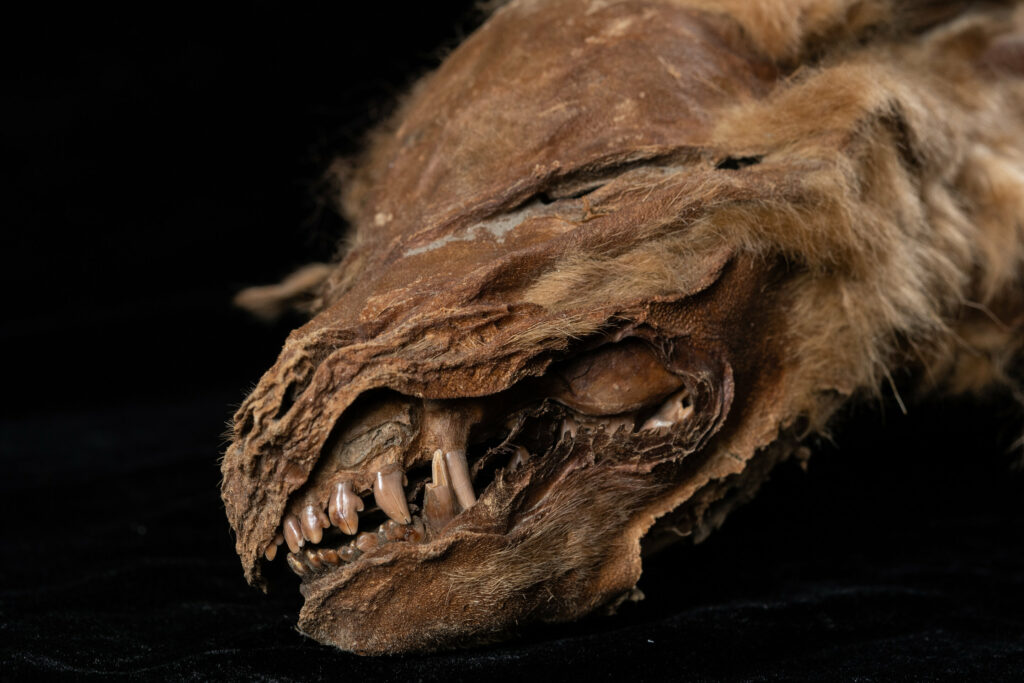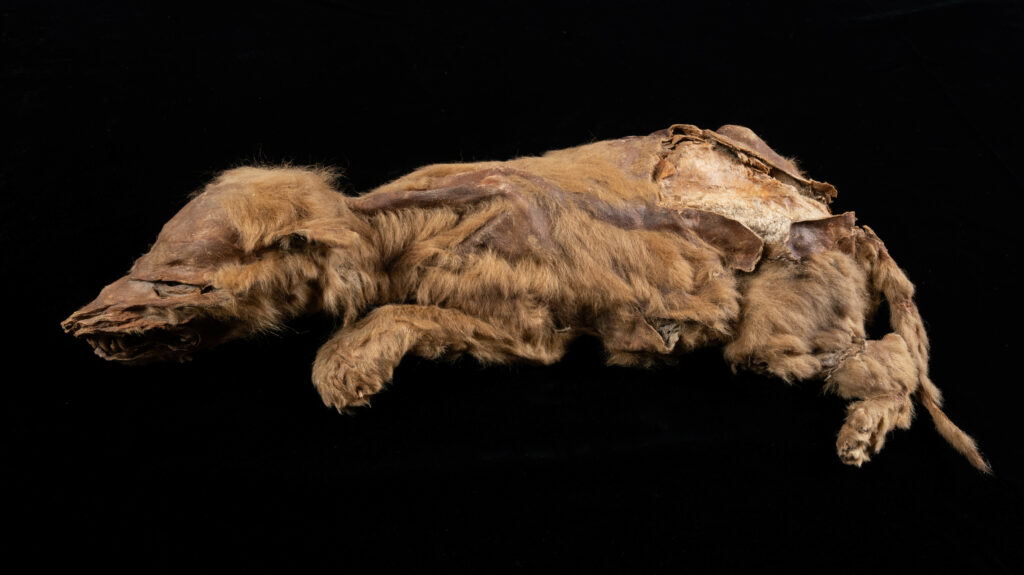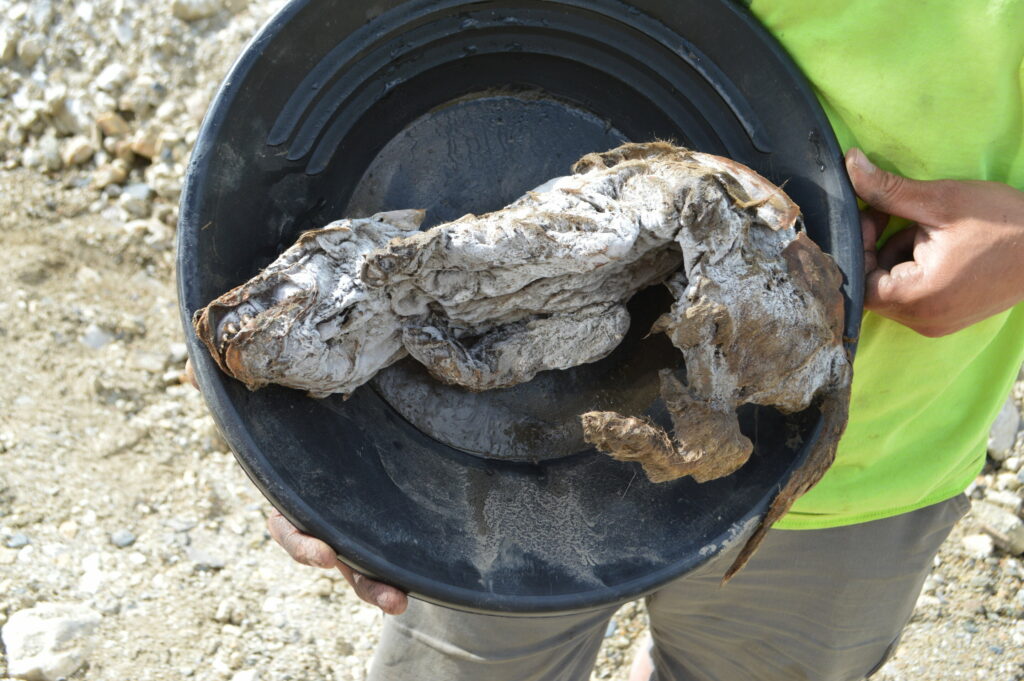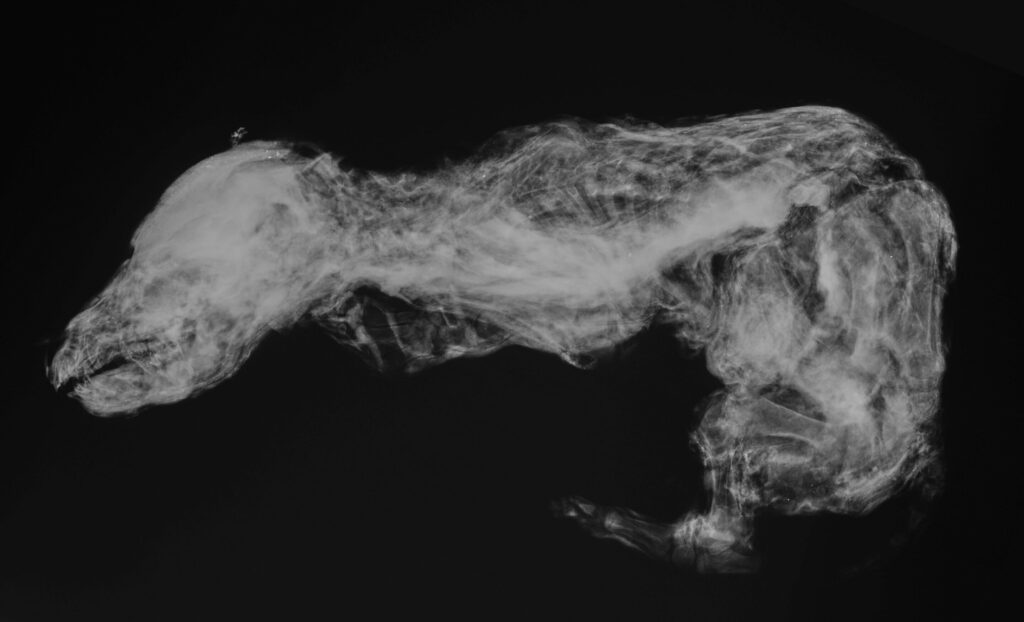
A gold miner in Canada’s freezing Yukon had an unusual day at work. While water blasting a wall of frozen mud, the miner exposed the mummy of a wolf pup that had been locked in the permafrost for 57,000 years. The astonishing mummy is pristinely preserved, with virtually all organs, fur, teeth, and tissue intact, except for the eyes.
“The fact that she’s so complete allowed us to do so many lines of inquiry on her to basically reconstruct her life,” Julie Meachen, an associate professor of anatomy at Des Moines University, who was part of the team who examined the mummy.

The pup, named Zhùr by the local Tr’ondëk Hwëch’in people, was preserved so well for all these years thanks to unusual circumstances. Had the pup died slowly or been hunted by predators, it would have been very unlikely to mummify. The researchers believe that the pup was in its den when it collapsed, killing the animal instantaneously.
“It’s rare to find these mummies in the Yukon. The animal has to die in a permafrost location, where the ground is frozen all the time, and they have to get buried very quickly, like any other fossilization process,” said Meachen in a statement. “If it lays out on the frozen tundra too long it’ll decompose or get eaten.”
“Our data showed that she didn’t starve and was about 7 weeks old when she died, so we feel a bit better knowing the poor little girl didn’t suffer for too long.”

Thanks to the excellent preservation of the remains, the researchers were able to ascertain Zhùr’s diet. Surprisingly, instead of bison or oxen or some other large animal you’d expected to be eaten by Ice Age wolves, the pup was regularly eating aquatic food, particularly salmon.

Genome sequencing showed that Zhùr is descended from ancient wolf populations from Russia, Siberia, and Alaska, just like modern wolves. But despite the use of sophisticated investigative techniques, there are still many unanswered questions about the ancient pup.
“We’ve been asked why she was the only wolf found in the den, and what happened to her mom or siblings,” says Meachen. “It could be that she was an only pup. Or the other wolves weren’t in the den during the collapse. Unfortunately, we’ll never know.”
Zhùr belongs to the local Tr’ondëk Hwëch’in people, who have agreed to have the mummy displayed at the Yukon Beringia Interpretive Centre in Whitehorse — and, in the future, she may be joined by other mummies.
“One small upside of climate change is that we’re going to find more of these mummies as permafrost melts,” says Meachen. “That’s a good way for science to reconstruct that time better, but it also shows us how much our planet is actually warming. We really need to be careful.”


